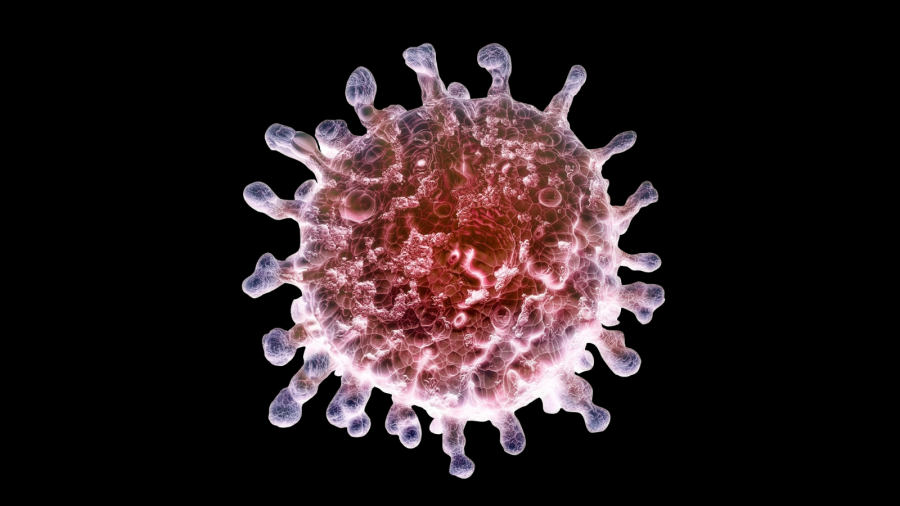Expert comment - Self-isolation reduced to five days
14 January 2022 London School of Hygiene & Tropical Medicine London School of Hygiene & Tropical Medicine https://lshtm.ac.uk/themes/custom/lshtm/images/lshtm-logo-black.png
COVID-19 3D visualisation. Credit: GreenPlate/Shutterstock
This announcement follows the reduction of the self-isolation period in December from 10 days to seven, with negative tests on days six and seven. From Monday, those who have negative lateral flow tests on days five and six will be able to leave self-isolation on the sixth day.
A recent study from the London School of Hygiene & Tropical Medicine's Centre for Mathematical Modelling of Infectious Diseases (CMMID) looked at this 'test to release' strategy (not yet peer-reviewed).
Billy Quilty, Research Fellow at LSHTM, explains this research and reacts to the news: "Since early in the pandemic, public health authorities have asked people with COVID19 symptoms or who test positive to isolate for 10 days. This was necessary to avert the worst of the pandemic, as curbing transmission led to lower cases, which in turn lowered the rate of new hospitalisations, thus limiting the demands on the healthcare service and ensuring that the standard of care could be kept as high as possible.
"With the recent rapid spread of Omicron, the goal remains the same, but has brought new challenges. High prevalence has led to a substantial number of individuals isolating simultaneously, which poses a threat to the running of key services including the health service, this time on the supply side.
"Meanwhile, we have seen lateral flow antigen tests (LFTs) become widely accessible in countries such as the UK, which allow people to rapidly assess whether they are currently infectious or not. The development of tools such as these mean we can now gain and use information we didn’t have previously to reassess our approach to managing the pandemic and limit harms holistically.
"We therefore decided to model whether we could use LFTs to reduce the duration of the isolation period by requiring one or more days of negative tests to release. Our preliminary analysis found that requiring at least two days of negative tests reduces the risk of transmission from individuals leaving isolation to low levels, regardless of the initial wait, as individuals are unlikely to have infectious viral loads following two negative tests.
"Therefore, we estimate that there is low risk associated with reducing the isolation period to 5 days with a policy of two tests to release. By allowing those who are no longer infectious to leave isolation early, we can address the issue of staffing absences and reduce the strain on the healthcare system and other key parts of the economy.
"The major limitation of our study is that there is limited data on how viral load changes over the course of someone's infection with Omicron, which will determine how infectious they are and how long they test positive for, so we used pre-Omicron data. Studies are ongoing to investigate whether this has significantly changed for Omicron, which we will incorporate into our analysis once it becomes available."
If you enjoyed this article and would like to build a career in global health, we offer a range of MSc programmes covering health and data, infectious and tropical diseases, population health, and public health and policy.
Available on campus or online, including flexible study that works around your work and home life, be part of a global community at the UK's no.1 public health university.